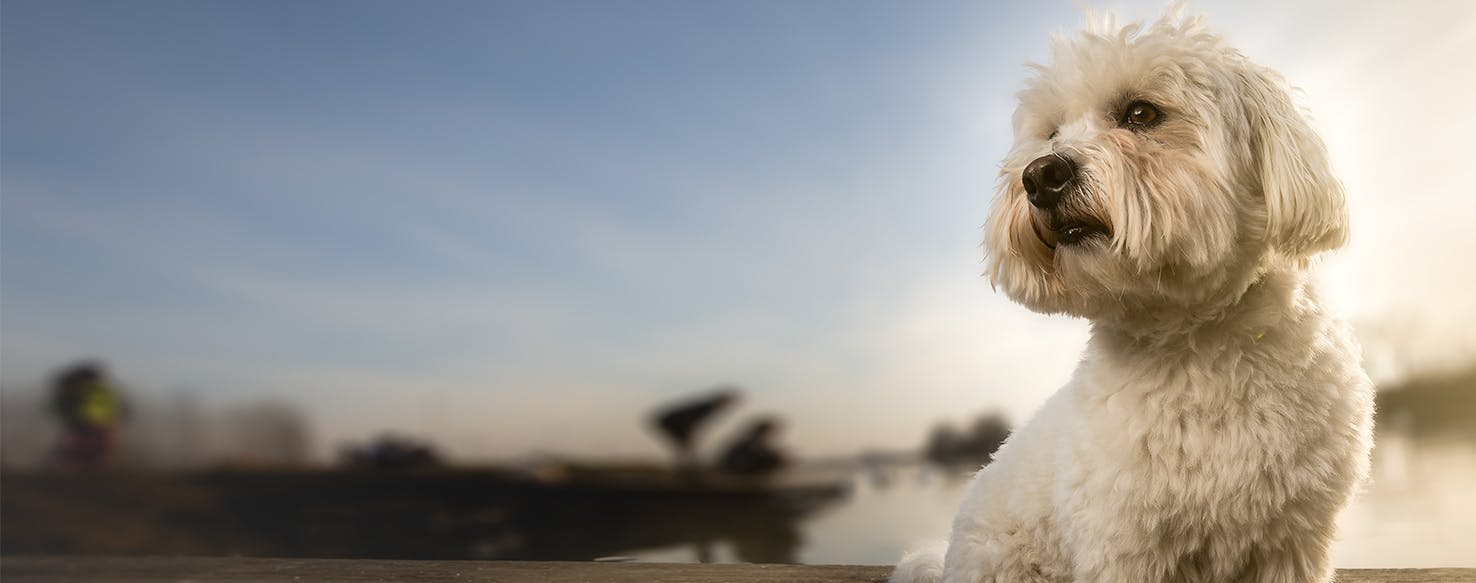- Home
- The Daily Wag!
- Senses
- Can Dogs Detect Carbon Monoxide?

Can dogs detect carbon monoxide? In terms of alerting their humans to its presence, no. While some dogs are alerted to the carbon monoxide detector's alarm going off and do wake their families to get them out of the house, the alarm is what alerted the dog, not the carbon monoxide itself.
Studies do tell us, however, that pets are more susceptible to carbon monoxide poisoning than humans. Our pets are most vulnerable during cold winter months. When it gets colder, we seal up our houses, insulate the windows, keeping in warmth and out cold. We are also sealing in fumes; in the case of attached garages, exhaust fumes add to the equation. Our dogs spend more time at home and if too many fumes are inhaled, and because they are sometimes much smaller than us, even the smallest exposure to carbon monoxide can be potentially fatal to our little friends.
The best precaution you can take is to not let your dog into your garage at any time during cold months, especially when the doors are closed and a car is running and, of course, to install carbon monoxide detectors throughout your home.
If your pet is showing signs of weakness, lethargy or problems with their coordination, severely reddened gums or skin, and changes in normal reflexes, get them to the vet ASAP. Remember, the smallest pets as well as children, are the most vulnerable to these fumes. If your pet is affected, you need to get your entire family checked out too, along with taking necessary precautions to fix and eliminate this problem permanently.
It is important to keep an eye on your pet during winter months if their behavior changes. There will also be some clear body language signs to keep a lookout for. It only takes minutes for pets and small children to be affected by carbon monoxide, so if you notice any of the following behaviors in your dog or your kids, act immediately and get them to the vet/doctor.
Carbon monoxide poisoning causes its victims to be weak and sleepy. It's not uncommon to experience gastrointestinal upset, as well. Those who have breathed in these deadly fumes will likely lose their coordination and have a hard time walking. After too much exposure, victims are likely to collapse on the ground.
If you notice these any signs, get your dog to the vet immediately and get your entire family out of the house until the fire department or your gas company can come and check your home for carbon monoxide levels.
Body Language
Some signs that indicate possible carbon monoxide poisoning include:
- Shaking
- Weakness
- Yawning
- Low Tail Carriage
- Raspy Panting
- Lack Of Focus
- Sleepiness
Other Signs
More signs to watch out for are:
- Stumbling
- Vomiting
- General Fatigue
- Difficulty Walking
- Coordination Issues
While dogs who go down in caves have been potentially exposed to this threat for a long time, carbon monoxide in the home is a relatively new problem.
First, our dogs weren't always so welcome indoors, with many people only keeping dogs if they had farms or hunted before last century. Dogs moving inside paired with attached garages and gas heating has led to carbon monoxide poisoning becoming a real issue! Now, it is recommended that every family invest in a carbon monoxide detector.
The smaller the human - or furry human, the more quickly they are affected. Their systems are smaller and therefore, more easy to overcome with toxic fumes. Studies show that our pets and small kids can be overtaken by carbon monoxide poisoning in as little as 10 minutes! If you or your pet have tested positive for high levels of carbon monoxide, which is over 25% blood saturation, oxygen therapy must begin immediately, followed by limited exercise and rest.We know now that carbon monoxide is odorless, has no color and does not show itself in forms of rash or lung issues. Carbon monoxide occurs when carbon fuels in the home can't properly expel themselves, such as the case of diesel fumes from a car engine being trapped inside a closed garage or being inside a burning building for too long.
What happens when carbon monoxide is taken into the system? It decreases our ability to inhale and expel oxygen due to it attacking our bloodstream and lungs. If a human, particularly young children and adults who smoke, or a pet is exposed to carbon monoxide for any prolonged amount of time, it will lead to hypoxemia and could result in death in mere minutes!
Have questions or concerns about your pet?
Chat with a veterinary professional in the Wag! app 24/7.
Get Vet ChatSafety Tips to Prevent Carbon Monoxide Poisoning
- Make sure your furnace, water heater, and fireplaces are properly ventilated and get them inspected every year.
- Make sure your kerosene container is kept in a ventilated area.
- Do not run your car's engine in an enclosed garage especially with small children or pets in the car or area.
- Do not use propane heaters.
- Do not make the garage your dog's sleeping spot.
- Install Carbon Monoxide Detectors.
- Do not use space heaters in lieu of normal furnace heat.
Written by a Smooth Coated Collie lover Mary Alane Whalen
Veterinary reviewed by:
Published: 02/28/2018, edited: 04/06/2020
More articles by Mary Alane Whalen
